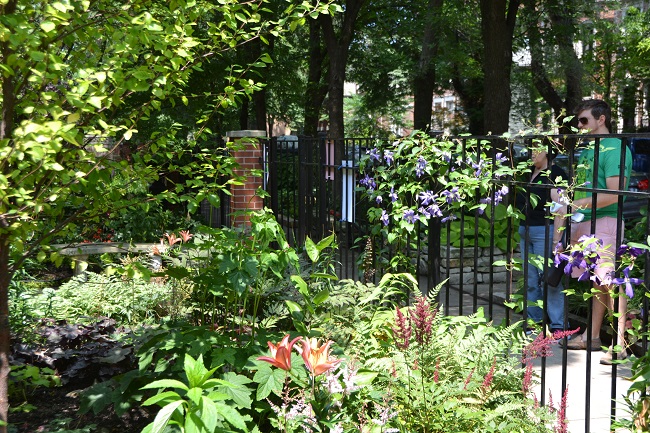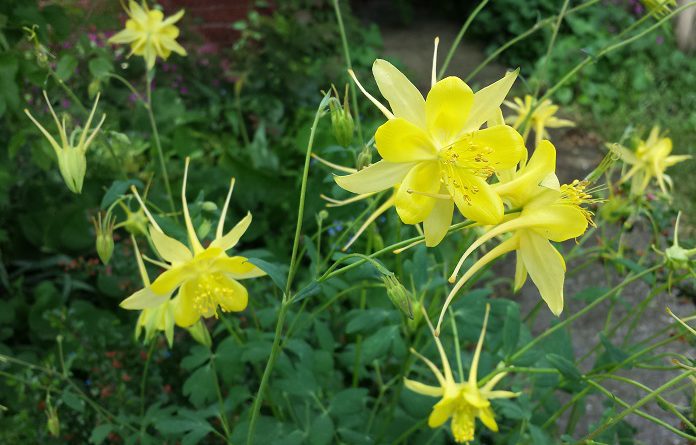The Budburst Challenge: Natives v. Nativars
A Master Gardener’s Master Gardener
![]() (July 15, 2018) If the name Laury Lewis sounds familiar, it’s probably because he has become a yearly fixture on The Mike Nowak Show. Not only is he a University of Illinois Extension (and Chicago) Master Gardener and former Chicago Gardener of the Year, as a member of the not-for-profit Sheffield Neighborhood Association (SNA), he is one of the organizers of what is often called the “Summer’s Best Festival” in Chicago, which occurs over two days–Saturday, July 21 and Sunday, July 22.
(July 15, 2018) If the name Laury Lewis sounds familiar, it’s probably because he has become a yearly fixture on The Mike Nowak Show. Not only is he a University of Illinois Extension (and Chicago) Master Gardener and former Chicago Gardener of the Year, as a member of the not-for-profit Sheffield Neighborhood Association (SNA), he is one of the organizers of what is often called the “Summer’s Best Festival” in Chicago, which occurs over two days–Saturday, July 21 and Sunday, July 22.
We’re talking about the 50th Annual Sheffield Music Festival & Garden Walk, featurig self-guided tours of more than 80 Gardens, guided Architectural Tours, live entertainment by some of Chicago’s and North America’s finest bands, food and drink, and activities for children at the Kids’ Corner. Proceeds from this festival provide continued support for neighborhood schools, local institutions, and community projects. In addition, proceeds are allocated to SNA’s Award-Winning Beautification Program, a plan to maintain Sheffield as the Garden District of Chicago.
As you can see, it’s a milestone year for the festival. So the event has gone out of its way to reach back into Chicago roots rock as part of its entertainment package. Among the bands that will be featured this year are
 The Shadows of Knight
The Shadows of Knight
The Buckinghams
The Ides of March
New Colony Six
as well as tribute/cover bands like
The Windy Gypsys
Rosie and the Rivets
The Four C Notes
Claremont Drive
Dick Diamond and the Dusters
ARRA
Of course, the reason that Laury is on this particular program is because of the garden walk portion of the event. According to their website, there will be more than 100 gardens on the self-guided tour. For a $10 donation, you can pick up a guidebook that contains a map and garden descriptions on the lawn in front of St. Vincent de Paul Church, 1010 W. Webster Avenue.
As usual, Laury and I will hang out with Peggy Malecki today and chat about the festival and gardening in general. We welcome your calls at 877-711-5611, or join the conversation on Facebook, Twitter and maybe even Instagram.
Calling all citizen scientists!
Are you familiar with the concept of “nativars”? If not, we will help explain it. Let’s start with another name that might be foreign to you–Budburst. In this case, I’m talking about a project of the Chicago Botanic Garden. Here’s how they describe it.
Budburst citizen scientists work together with research scientists, educators, and horticulturists to answer specific, timely, and critical ecological research questions by making careful observations of the timing of plant life cycle events, also called phenophases. These life events differ depending upon the type of plant, but usually include leafing, flowering, and fruiting phases of plants as well as leaf color and senescence.
The folks at Budburst have now zeroed in on nativars, which they describe as “cultivated varieties of native plants,” in something they call Nativars Research Project. Why?
Nativars can be different from their native parents in flower color and scent, the shape or number of flowers and petals, phenology, foliage color, and more. Since color, scent, timing, and size of flowers are very important to pollinators, it is easy to imagine that nativars might be more, or less, attractive to pollinators than the wild (native) species. They may even attract a different group of pollinators all together. Gardeners and scientists alike are wondering:
Do nativars provide the same resources
for pollinators as their wild cousins?
Good question, and something that I wrote about in an article for Chicagoland Gardening Magazine about a decade ago. Fortunately, I was talking to some very bright and educated people, not just ruminating while watching golf on TV. Here’s a little bit of what I wrote:
[Doug] Tallamy states bluntly, “There’s no such thing as ‘nativars.’ They are cultivars of native plants. They introduced that [name] to try to convince people that they’re just fine.”
[Connor] Shaw has a more benign attitude towards “nativars.” “First of all, what we’ve found is that when those things seed they don’t go true to form,” he explains. “They actually revert back to the native plants.” The example he uses are what he calls the “fancy” new coneflower (Echinacea) colors. According to the observers he’s talked to, “the doggone things seed profusely and revert back to the same old purple coneflower color.” He says he prefers the straight species but that if the closest his customers get to natives is a “nativar,” he can live with that. He warns, however, that the “off-color” or variegated leaf plants never perform as well as the ones that are green.
As Budburst illustrates, the debate about nativars is still going on. Which is why they’re looking for citizen scientists to collect data that can help put us on the right track, even if all of the questions about these hybrids can’t be completely answered. To that end, Budburst is working with four botanic gardens (Chicago Botanic Garden, Denver Botanic Gardens, Mt. Cuba Center and San Diego Botanic Garden) to determine whether nativars are as efficient as native plants in providing pollinator services.
This is where you can get involved. You can participate by
- Planting some or all of our target species in your own garden (or in a large container on a porch or patio) and becoming a pollinator observer.
- If you’re not a gardener, just visit any of our Nativar garden sites and collect and submit pollinator data from the plants there.
There’s a lot more information on the Nativars Research Project page. And to help explain the project, we welcome Kayri Havens, Ph.D., Medard and Elizabeth Welch Director, Plant Science and Conservation, and Jennifer Schwarz Ballard, Ph.D., Vice President, Learning and Engagement, both from the Chicago Botanic Garden.
They will also tell you how to get involved in a Budburst Nativars Workshop. There are two remaining, on Tuesday, August 14, and Saturday, September 15, 2018. Both are from 10 a.m. – noon in the Plant Conservation Science Center Seminar Rooms.

